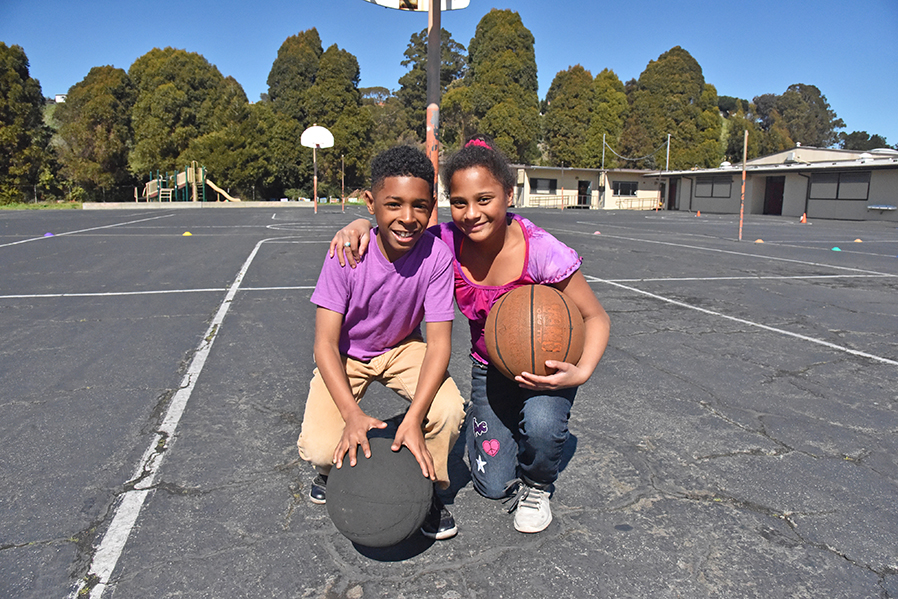Puloga (Variation of Sprout-Ball – Distant)

Grades 3-5
Bouncy Balls
Development Goal
To develop strategic thinking
Before You Start
- Hand out a belt with 2 flags attached to each player.
- Explain the game. Emphasize safe moving throughout the play area and safe dodgeball throwing practices (only below the waist.)
- Designate an out-of-bounds area (basketball court boundaries work well for this game).
- Have students spread out throughout the play area.
Set Up
Can be played outside or in a gym. Use a large rectangular area with clear boundary lines.
How to Play
- On the signal, players try to throw the dodgeballs at each other. If a player is hit with the dodgeball, s/he must remove one of her/his own flags–but then can continue in the game. The removed flag is dropped to the ground.
- Players with or without a ball can attempt to remove a flag from opposing players (no physical contact allowed). Players may not protect their flags from being removed.
- A player who loses two flags—either by being hit with a ball and/or having a flag removed by an opposing player—will be required to collect two flags from the ground and go to the side of the playing area, completing five jumping jacks before putting on his or her flags again and rejoining the game. When exiting the play area to reattach flags, players should hold their flags over their heads to indicate they are out of the game.
Variations
- Background on the game: Puloga is an Australian Aborigine game. It is a re-creation of mock combat tournaments that took place in the Cardwell and Tully River areas of north Queensland, Australia. It was essentially an entertainment activity, though the opportunity was taken to settle disputes. At Cairns the Yidinji people called these activities puloga.
Adapted from http://www.ausport.gov.au/participating/indigenous/resources/games_and_activities/individual_games/ball_games/puloga.pdf - Variation: This game can also be played on two separate teams. Use pinnies or different colored flags to designate the teams.